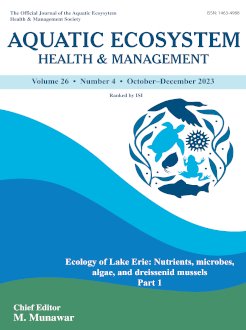The east basin of Lake Erie continues to suffer from blooms of filamentous green algae (primarily Cladophora). Potential management action through reduced phosphorus loadings have and continue to focus on the dissolved inorganic phosphorus pool but other potentially bioavailable phosphorus pools are not always considered. In this study, we describe the dissolved organic phosphorus pool in eastern Lake Erie, with an extensive sampling of four transects along the north shore of the eastern basin from May to September 2019. The dissolved organic phosphorus pool was characterized and quantified using sequential enzymatic hydrolysis to provide information on the enzymatically hydrolysable phosphorus fraction and component monoester P, diester P and a phytase hydrolysable component. These dissolved organic phosphorus fractions were compared to the soluble reactive phosphorus and total dissolved phosphorus pools. Results from this study revealed that a significant fraction (up to 63%) of the dissolved organic phosphorus pool is potentially bioavailable via enzymatic hydrolysis. Vertical differences in soluble reactive phosphorus, total dissolved phosphorus, and phosphate diester pools were also observed when comparing water column with near lake-bed samples, suggesting that the new benthic ecosystem since dreissenid colonization may be a greater source of dissolved inorganic phosphorus to the east basin than prior to colonization.
How to translate text using browser tools
29 May 2024
Dynamics of dissolved organic phosphorus in the nearshore of eastern Lake Erie
David C. Depew,
Emily Krutzelmann
ACCESS THE FULL ARTICLE
benthic
Cladophora
Dreissena
hydrolysis
Phosphorus cycling





